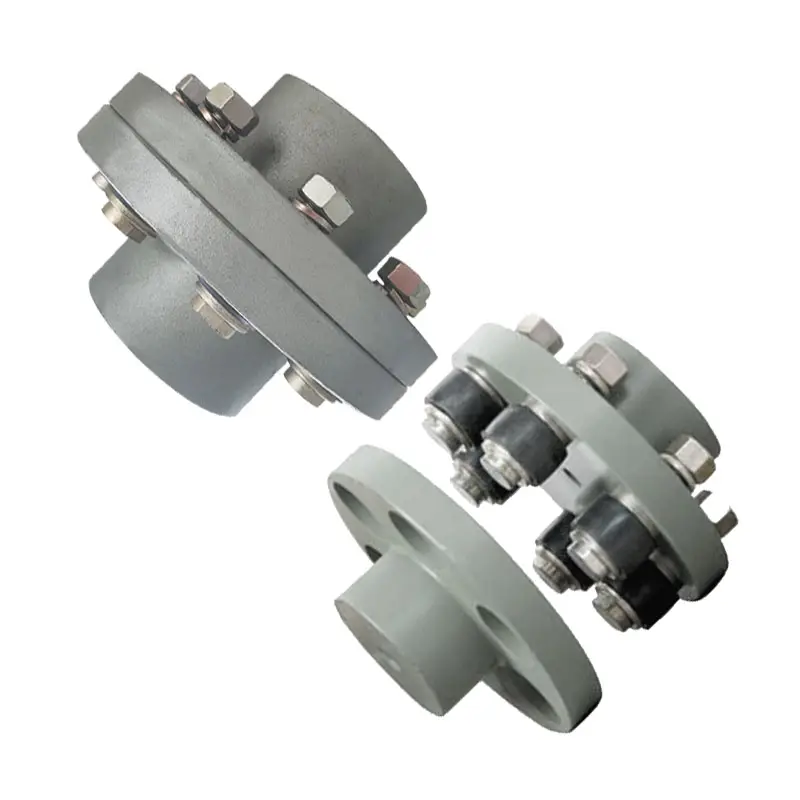“`html
Introduction to Flange Coupling
Flange coupling is a device used to connect rotating shafts for the transmission of power in a wide range of machinery. It consists of two flanges, one on each shaft, which are connected by bolts. This type of coupling is known for its high torque capacity and rigid connection, making it ideal for heavy-duty applications.

Key Features
- Durability: Designed to withstand harsh conditions and high torque applications.
- High Torque Capacity: Capable of transmitting large amounts of torque efficiently.
- Easy Maintenance: Simple design allows for easy inspection and maintenance.
Applications and Advantages
Flange coupling is extensively used in forestry equipment due to its robustness and reliability. Its applications range from sawmills to heavy-duty logging machinery.
- Reduced Downtime: Durable design minimizes breakdowns, ensuring continuous operation.
- Power Transmission Efficiency: Efficiently transmits power without slippage, crucial for cutting and hauling operations.
- Alignment Accuracy: Ensures precise shaft alignment, critical for the smooth operation of machinery.
- Versatility: Suitable for various types of forestry equipment, enhancing its adaptability.
- Cost-Effectiveness: Long service life and minimal maintenance requirements make it a cost-effective solution.
Understanding the Working Principle of Flexible Couplings
Flexible couplings, unlike rigid flange couplings, accommodate misalignments between shafts through their elastic components. These couplings can absorb vibrations and shocks, protecting the machinery from potential damages.
The working principle involves the use of elastomeric materials or metal elements that allow for slight movements, thus compensating for axial, radial, and angular misalignments. This flexibility ensures a smoother operation and extends the lifespan of both the coupling and the connected equipment.
While flange couplings are preferred for their rigidity in heavy-duty applications, flexible couplings are ideal where misalignment tolerance and vibration dampening are required.
Selecting the Right Flange Coupling
- Torque Requirements: Determine the maximum torque required by your application to ensure the coupling can handle the load.
- Shaft Size and Type: The coupling must fit the shaft sizes and types of the equipment being connected.
- Environmental Conditions: Choose materials and designs that can withstand the environmental conditions of the application.
- Maintenance Accessibility: Consider how easily the coupling can be accessed for maintenance and repair.
- Cost: Evaluate the initial cost against the expected lifespan and maintenance needs to ensure economic efficiency.
Maintenance of Flange Coupling
Maintaining flange couplings is crucial for ensuring the longevity and reliability of the machinery. Regular inspections should be conducted to check for wear and tear, bolt tightness, and alignment accuracy. Lubrication of the bolts and flanges can prevent corrosion and facilitate smoother operation. Timely maintenance not only extends the service life of the coupling but also prevents costly downtime and repairs.
About HZPT

HZPT, established in 2006, is a leading manufacturer and exporter specializing in the design, development, and production of couplings. With our in-house design and R&D team, we offer customized products tailored to meet the global demands of our clients. Our comprehensive quality testing system from raw materials to finished products ensures the highest product quality, backed by CE and TUV certifications. Our philosophy, “Customer satisfaction, our pursuit,” drives us to offer the best service, quality, and competitive pricing. Our main products cater to a wide range of mechanical industries worldwide, with a significant presence in the European and American markets. Choosing HZPT means opting for reliability, quality, and a partnership dedicated to meeting your specific needs.

“`
